
Suggested Readings


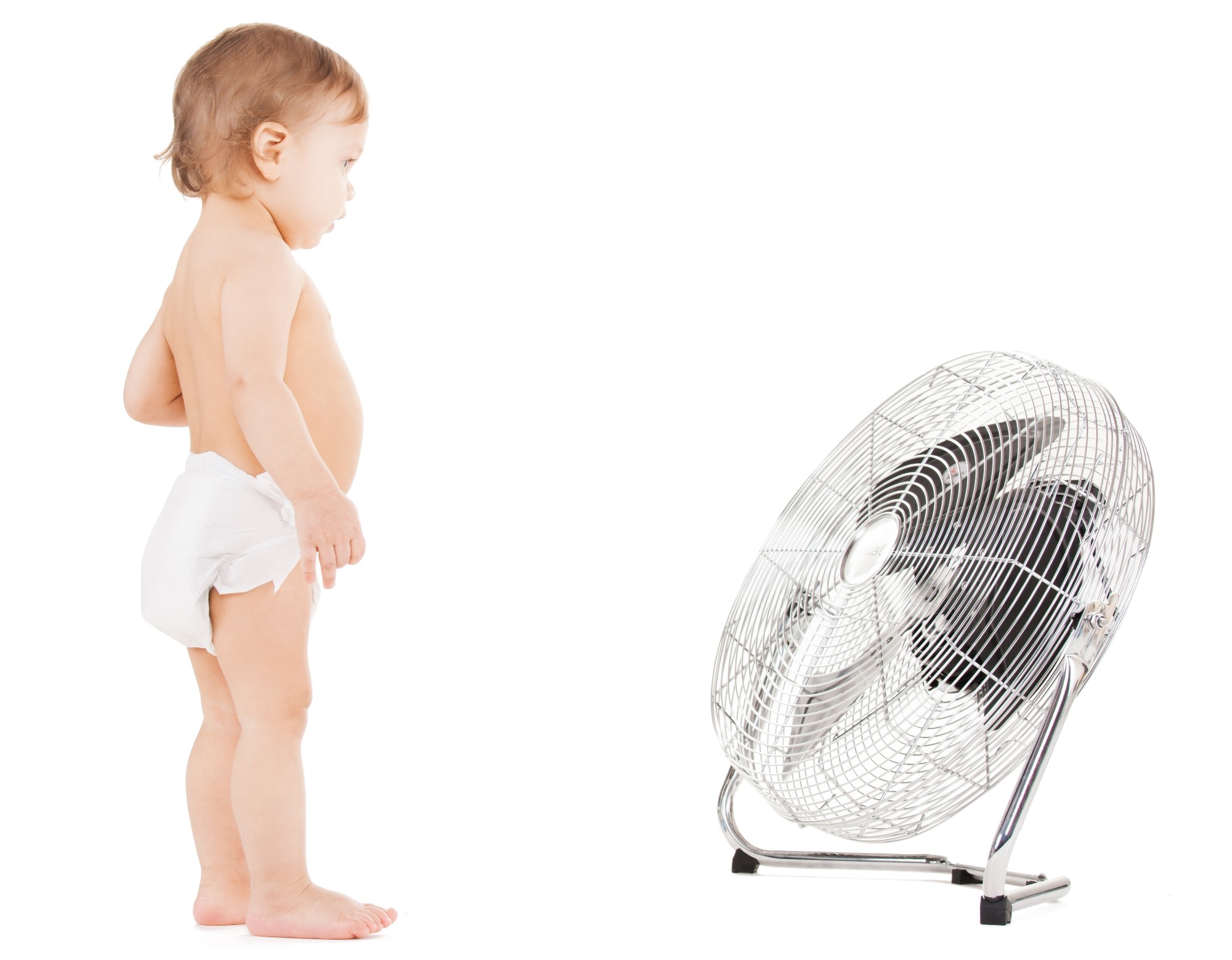
Air conditioning can dry the humidity in the room, and babies and children can wake with a dry mouth and feel thirsty and their cries can equate to more nighttime feeding occurrences. Fixing humidity doesn’t mean they’ll have one less night feed – if they are hungry, then they absolutely need to be fed!
For children who are mouth breathers and sleep with their mouth open, a dry room can be an issue and sleep disrupter.
A humidity range between 40-60% is healthy for the body, mainly because bacteria have a hard time growing in this range. The EPA’s recommends 30-50% for preventing mold growth in the house as higher humidity promotes mold growth. Some children’s hospitals keep their air at 55%. How a room is built and insulated is also a factor for promoting mold growth. If walls get cold at night, mold is more likely to grow.
Aim for a higher humidity level without mold growth. Factors include the season and construction of the room. You can get an inexpensive humidity thermometer or pick one up from your local hardware store.
The humidity level will be raised significantly if you aim a humidifier or diffuser at your child’s crib or, but the overall humidity of the room will not be as high. This is an effective way to give Baby the benefit of humidity while decreasing your risk of mold. However, you need to be sure Baby is warm if you’re using a cold mist.
If your child is an amazing newborn or beautiful older baby, the room should be between 68-72 degrees F.
It is very important that you not overheat your newborn when Baby sleeps as it increases the risk of SIDS/SUIDS. It has also been shown that using a fan can decrease the risk of SIDS/SUIDS by 72%!
Fans help with increasing the mix of the exhalation into the room air and improving room ventilation. This percentage is obviously very high and getting a small fan is worth the investment. In addition, you may want to invest in a fan guard, which is made out of fine mesh and fitted over the fan head to prevent little finger getting caught in the blades. This will also prevent your child from poking other objects in the blades. Place the fan away from Baby, ensure at least 3 to 4 feet between the tip of the ceiling fan blades and the edge of your child’s bed or other furniture, so if you have an older child who is tempted to jump on their bed or climb, they won’t reach the fan. A ceiling fan is ideal.
If the room is cooler for Baby, you need more layers. Layers do not equal blankets with babies! They can get intertwined and tangled in them and suffocate. More layers mean instead of just being swaddled in a diaper (which is very effective for a warm room), swaddle Baby in a onesie, or swaddle Baby wearing footie jammies. Or double swaddle! Or swaddle baby in a diaper alone with a velcro swaddle and a receiving blanket burrito-swaddled over it.
No hat! At the hospital, the nurses will provide a hat for you… do not keep this on your baby while sleeping swaddled after the first couple of days..! In fact, full-term babies don’t really need a hat when dressed appropriately, even from birth. It’s really a strange American thing. If a nurse places a hat on your baby’s head right at birth, take it off! Smelling your baby’s head can trigger pheromones and increase oxytocin and help you birth your placenta!
Socks for sleep are also a no-no. Babies with cool extremities are not cold, and it helps them self-regulate their temperature while not wearing these. Socks and hats while sleeping swaddled can contribute to overheating and SIDS/SUIDS. You can check if your baby is too hot by feeling the back of their neck and upper back. If they’re clammy, they are too hot. If you’re warm, your baby is hot! If you’re hot, your baby is very hot! If you’re cold, they are probably perfect. Babies overheat faster than adults! Again, the ideal temperature for babies is 68-72 degrees F; this can be super cold for adults, but it’s super ideal for a sleeping baby, and some pediatricians even recommend the room be as low as 66 degrees F! Wow!
Swaddling is effective during the Fourth Trimester to help mimic the feeling of the womb. After wrapping Baby up in a blanket like a little burrito, Baby feels safe and secure because Baby feels boundaries, like when inutero. Baby is born with over 70 reflexes that Baby loses as Baby develops, and one is called the moro reflex or startle reflex. Swaddling helps Baby feel the boundary when disrupted by the reflex so that they have an easier time falling asleep and staying asleep. It can take up to 4 or 5 months for Baby to stop the startling, but you can stop swaddling after Baby starts rolling over and transition to a sleep sack.
We love the Ollie swaddle, which makes swaddling a breeze with velcro.
For quick layering advice, many mothers find “inception swaddling” or double swaddling super effective: first place Baby (wearing a diaper only) in a SwaddleMe or Happiest Baby Sleepea Swaddle, and then burrito-swaddle Baby in a muslin swaddle blanket such as a lightweight Aden + Anais muslin cotton receiving blanket.
Many of our clients love to double swaddle with the Miracle Blanket Swaddle and the Halo Swaddle for the second layer as well.
It’s also proven that the ideal temperature for sleep is between 65-70 degrees Fahrenheit. If your child is a terrific toddler, dress them in a single layer of long pants and long sleeves. If the room is warm and it’s not a variable you can control, stick with short sleeves or nothing but a diaper.
As an adult, it’s easy to have a glass of water next to our beds when we wake thirsty. Obviously, this is dangerous for babies! However, toddlers can have a spill-proof cup near their bed such as the Munchkin 360 Training Cup. This cup is a great stepping stone for Little Ones transitioning from the bottle as it has a 360-degree drinking edge. Its spout-less design eliminates spills completely so if your child falls asleep with it in their hands or bed, you don’t need to worry about mattresses getting soaked as the cup automatically seals when your child stops drinking.
These are better to use than a straw-type of sippy cup for both developmental and sanitary reasons:
These cups also come in stainless steel if you want to keep it in the fridge for children who absolutely love cold water on hot days.
If you use air-conditioning or central heating, you may consider adding a humidifier to the room. A cool-mist diffuser/humidifier combo works really well.
Crane Humidifiers: Awesome and easy larger cool-mist humidifier. Don’t pour water into the doughnut hole. Everyone makes this mistake! Remember to tell your partner. You need to lift the clear top portion off, bring it to the sink, and fill it from the bottom by turning it upside down and unscrewing the cap.Diffusers are another option to create humidity and can be used with essential oils. These diffusers require no filter for the essential oil. You just add a couple of drops of GMO-free pure essential oils which are calming and effective for sleep such as chamomile and lavender directly in the basin. Only use the red light setting because other lights have different wavelengths that inhibit melatonin and disrupt sleep. (Read more about Baby Night Lights and Better Sleep here.) You can also dim the brightness of the light and it has a cool-mist, doubling as a diffuser and humidifier. The waterless auto shut-off feature is a great safety net so when all the water evaporates, it shuts off.
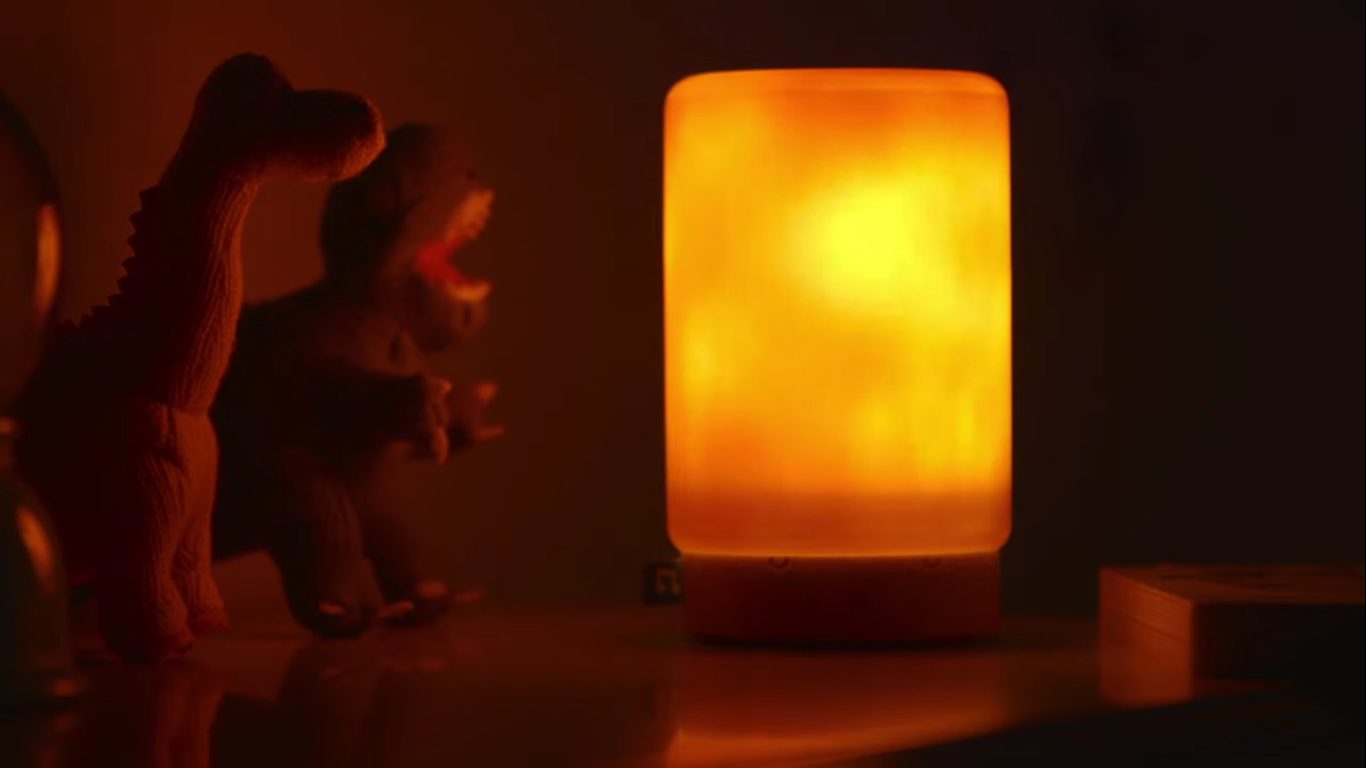
A quick Google search for “baby night lights” brings you to many magical and cute animal baby night lights and heart-shaped baby night lights but 99% of these baby night lights you see are proven to actually inhibit sleep.
If you’re using a nightlight in your baby’s/toddler’s/child’s room, or plan to, you need to know which type of lights to avoid so you can create the best possible sleep environment for your Little One.
If you already have a night light in your child’s room, and it’s something that emits a dim glow, it may be causing disruption to your child’s sleep, and here’s why:
The wavelength of different colors such as white, blue, and green-based lights inhibit melatonin at night. Melon-what? Trust me, your honeydew will love you for altering your child’s night light situation and your precious babe will be able to sleep longer and stay asleep at night.
The sweet sleep hormone, melatonin, is released by the brain when there is a response to light sensitivity in the eyes. This hormone is essential for children to fall asleep and stay asleep overnight. If the world wasn’t clogged with electric lighting, research has shown children fall into slumber between 7:30pm and 8pm.
It’s common for parents to choose cute nightlights that might emit blue, green, white, pink, or purple hues. Blue is especially calming and used by most manufacturers of baby night lights but it’s a scientifically proven sleep disrupter and mistake to use them if you’re sleep conditioning or sleep training, or trying to get your baby, toddler, or younger child to stay in bed or sleep well throughout the night.
Cell phones, laptops, TVs, and almost all home lighting have blue and white-based lights need to be off and out of the area where your child is sleeping or away from your child at least an hour before they sleep. This is because these lights inhibit the body’s secretion of melatonin by tricking the brain into believing it is still daylight.
Red light is the only light, shown by research, that does not inhibit melatonin because red-based light has a much higher wavelength than white/blue/green light.
The goal is to use no light in the nursery initially. When parents or caregivers come into the nursery for night feedings and diaper changes, you can then switch on a night light that is a red night light. This solution is perfect as red light does not interfere with the chemical building blocks needed for sleep.
However, you need to plan the environment and timeframe leading up to bedtime. Think about the light your child is exposed to before bedtime if you are giving Baby a bath or brushing your older Baby or younger child’s teeth. Is your bathroom lit by regular white light or energy-saving lightbulbs? These emit much more blue light than old-style incandescent bulbs. If so, you may consider investing in a battery-operated light which is more appropriate for preparing for sleep in terms of helping the brain prepare for sleep.
In the bathroom when brushing teeth or giving a bath, or in the nursery when dressing into pajamas, when first putting Baby down, or when reading a nighttime story (or two books) to your child, here are options:
Lumie Bedbug Light: A multi-purpose bedtime light which features a low blue light, while still producing a white/peach colored glow. Lumie Bedbug Light is non-inhibiting without having to use a red light in the room while reading or brushing teeth. This baby night light also includes a sunset mode option which gradually darkens the room, dimming after bedtime over a period of 15 minutes. This is perfect for toddlers and older children as well.
Battery-Operated Electric Candles are beautiful, glow like real candles, and create a calm, cozy environment for bedtime. These are my favorite electric candles as their flames actually move and dance. They transform your home into cozy-feel-goodness!
Don’t forget rechargeable battery chargers are a one-time, small investment and perfect for the bathroom in place of the main light at night, or reading area. Not only are you improving your child’s sleep, you’ll all wake less, and you’ll save money on your energy bill! Totally worth it.
These are the top red baby night lights I recommend for parents when breastfeeding or bottle-feeding Baby throughout the night or when needing light to change Baby’s diapers during the night, or for your Big Boy or Big Girl when they get up in the middle of the night during potty-training:
Red Gummy Bear Baby Night Light: This red LED gummy bear light is cordless, portable, and squeezable to turn on/off. It has a sleep timer of 1-hour and is soft and durable.
Red Fairy Lights: Effective and adorable solution when used in a lockable Kilner jar as a portable baby nightlight.
Greenic 0.5W Plug-in Light Sensor LED Red Night Light: This 2-Pack Red Night Light is super cute and mini-sized, and very effective for hallways and bathrooms. It can be turned upside down to see less of the LED light. It’s bright enough but also dim enough for nighttime feedings, and quick wakeups for diaper changes or bathroom trips.
Hatch Baby Rest Night Light and White Noise Sound Machine: This red baby night light doubles as a white noise sound machine, which is another recommendation for parents as pure white noise (do not use intermittent ocean waves, water sounds, crickets, etc.) is scientifically proven to help babies and children’s brainwaves when waking to lull back to sleep and sleep deeper. This machine is remotely controlled with your smartphone, features a time-to-rise alert, and you can customize the brightness by dimming the red baby night light as well as by setting the programs to turn off and on automatically based on your family’s sleep schedule. During the day you can play with the other fun colors! It includes a toddler lock feature as well.
Other solutions for sleep include how cozy your Little One is, and how much humidity is in their room. Dryness can cause a thirsty baby or toddler. Read more on how to fix the humidity in your nursery and child’s room for better sleep.
You may also consider BleepBleep’s Suzy Snooze.
Resources:
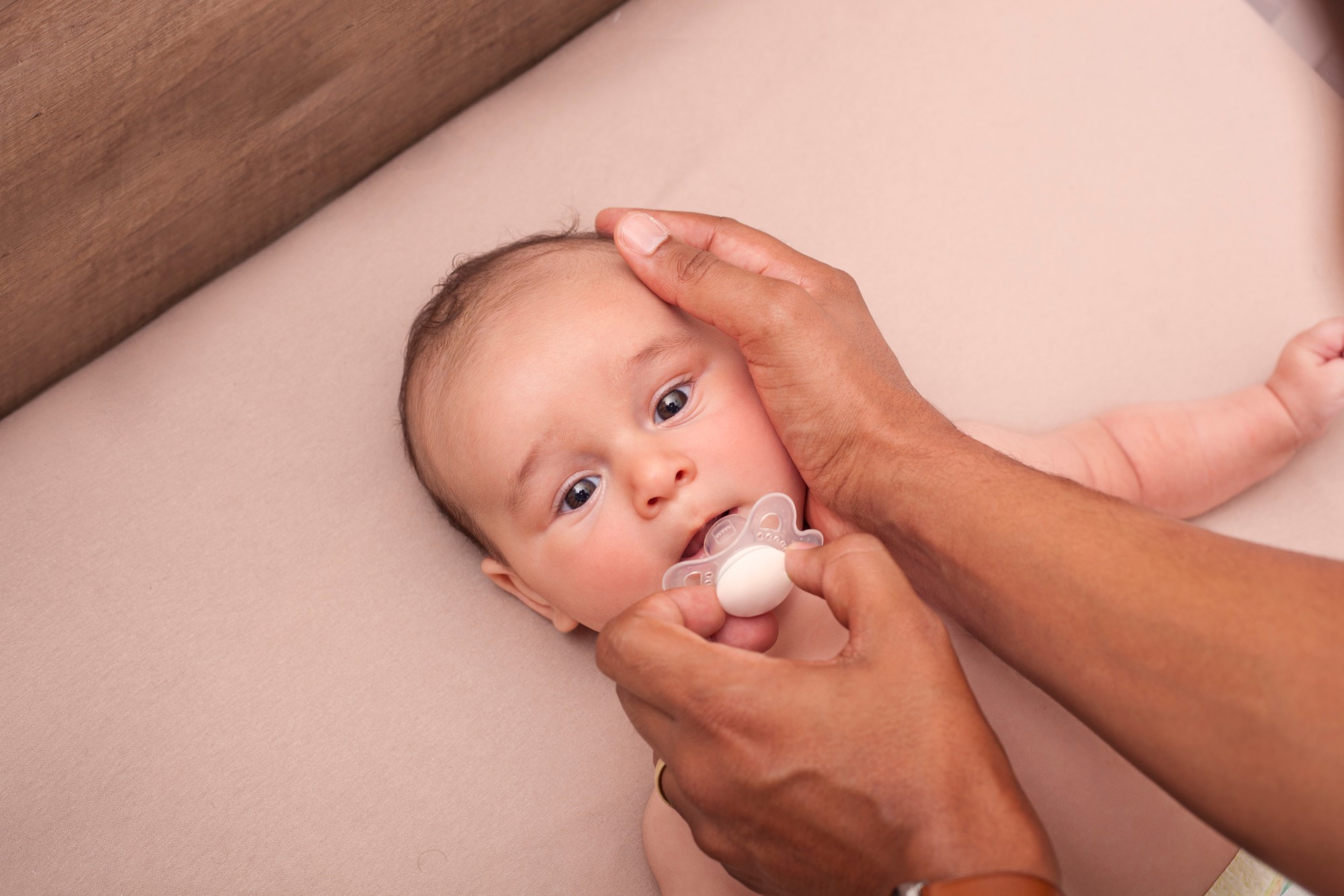
A hypothesis for colic is presented by Pediatrician Dr. Harvey Karp with a term defined as “The Missing Fourth Trimester”. This refers to the timeframe of a newborn baby’s first three months, and Dr. Karp’s discovery of the neonatal response, also known as the calming reflex or “off switch” for crying in infants younger than 3 months, which is activated by his solution called “The 5 S’s” technique.
According to most doctors, there are four main theories of the cause of colic:
However, Dr. Karp lists several rebuttals to these four theories in detail:
Dr. Karp notes that while these four theories are aspects of colic, they don’t detail its root cause; which is what he calls the missing fourth trimester. He even states babies are born three months too soon. Whether this is the case or not, we need to consider that upon birth, babies are suddenly extracted from a rhythmic, snug and entrancing environment (the womb) to an environment of sporadic noises, new reflexes and sensations. Therefore it is understandable this may overwhelm infants who have poor state control and thus provoke persistent crying.
The exciting part is the solution Dr. Karp has found to be a calming reflex which takes place involuntarily during the last months of pregnancy. The response puts fetuses in a trance, keeping them head down and motionless. Dr. Karp’s clinical experience has found that the calming reflex can be activated after a baby is born as well, by what he calls “The 5 S’s” – maneuvers that mimic uterine sensations. These techniques include:
I believe every pediatrician, caregiver, and parent should be informed of Dr. Karp’s theory of the missing fourth trimester. In my experience, performing the 5 S’s solution has soothed many babies I’ve cared for and proves to be an important gift every baby deserves in their first few months of their beautiful new life.

Pacifiers can be both a godsend AND a nightmare. I have cared for and supported hundreds of families and babies, from singletons to preemies with special needs and multiples. A lot has changed according to the AAP and guidelines from orthodontists and lactation consultants since I became a Certified Advanced Newborn Care Specialist, Doula, and Certified Lactation Educator Counselor.
Over my course I went from not recommending pacifiers to understanding the physiology of a human newborn and their sucking reflex in conjunction with their speech, oral, and facial development and how that actually connects with and benefits the breastfeeding relationship.
Let’s get down to it. As a new parent, you do not want your baby to become dependent upon pacifiers. This can result in sleepless nights for parents and disruption of your baby’s precious time to sleep and grow, as some argue that pacifying can lead to baby’s feeding signals being interrupted and disrupting breastfeeding. But if your baby is truly hungry, they’re going to spit it out and will not settle with a pacifier if they want to eat.
I have consulted with many families and as a Postpartum Doula, I’m going with the new parents (usually assisting the new mother while her partner is at work) to their pediatrician appointments. I have spoken to many pediatricians and all their views vary. Some pediatricians are very strict and don’t recommend a pacifier until 6 weeks and some are more casual, recommending to wait until the newborn is 2 weeks young.
In my experience as a Birth Doula, I have encountered hospitals using them often for NICU babies to encourage facial and oral development and promote sucking, but I’ve also seen hospitals lock up pacifiers!
Some healthcare professionals argue that pacifiers cause nipple confusion. There is no such thing as nipple confusion. It’s flow-preferencing that takes place, caused by hunger satiation from using any type of “flow” nipples (including preemie and slow-flow nipples), not using no-flow bottle nipples, the improper use of nipple shields, and from not practicing evidence-based paced bottle-feeding. Pacifiers don’t cause this.
As a trained lactation consultant, I do advise to use pacifiers sparingly. This could mean using it in the first week only a few times or using it in the baby’s third week as needed when Baby is quivering and not hungry – they have a sucking reflex and need to suck, so it’s okay. Not everything is black and white in postpartum, because every baby is so unique and different.
For example, if a baby was whisked away due to a lower APGAR score at birth, and then poked and prodded with needles and tests, they may have birth trauma and anxiety and that pacifier may help them. Birth trauma exists for newborns, too – they just went through a LOT! Even if they weren’t taken to the NICU, they can have trauma from coming down the birth canal, regardless if delivery was fast or slow, and regardless if a vacuum was used.
Babies receive a lot of pressure coming out, and they are resilient, but I have seen many babies with alignment issues who, when receiving proper care, are easily corrected by a pediatric chiropractor. Sometimes these issues aren’t addressed until the baby is 3-4 weeks old, for example, until the new parents are suggested to see a craniosacral therapist or pediatric chiropractor by the Postpartum Doula.
A fussy baby is an indication that something is wrong. Don’t panic. It doesn’t mean something is devastatingly bad or seriously wrong or hurting the baby. It means there could be one tiny variable that something is off. So let’s narrow it down, go down the list, and figure it out together.
There are different levels of fussiness; and it can be super overwhelming for new parents! The role of the Postpartum Doula alone is not trained in, or to offer, newborn care. It’s in my scope as a Certified Advanced Newborn Care Specialist to help you through issues you’re having if you’re my client, and this is why I do emergency, remote Newborn Consultations.
Determining what is and what is not colic, the definition of Purple Crying, determining the baby as being hungry, if they’re clusterfeeding, variables from Baby being too warm and a frantic parent actually thinking Baby is cold, to a hair strung around Baby’s finger, to a tiny gas bubble, to a wet diaper that is irritating Baby and not turning the diaper indicator line blue – all these variables and more can justifiably confuse a parent and cause so… much… frustration!
If a pacifier is going to save you sanity, then by all means, use it. How many pediatricians have admitted to me they used it on the first night with their newborn… I don’t have enough fingers to count.
Also, if the new mother has cracked and bleeding nipples, there’s an issue with improper latch and possibly not a deep enough latch, and other variables I’m not going to go into at this moment, and then a pacifier may provide relief to that baby while she gets help from an IBCLC (International Board Certified Lactation Consultant) or from a Lactation Counseling Consultation on what to do get baby fed, help heal her nipples, proper nipple care, guidance for preventing further similar issues, and a plan to protect her milk supply.
Don’t judge yourself. We aren’t going to judge new parents, that’s ridiculous, and you’re not welcome here if you’re judging a new parent. So let’s establish that as rule number 1: we aren’t going to judge ourselves because, let’s face it, there’s just not a great foundation of proper prenatal or postpartum care in America, which is one of the main reasons the American Doula profession has grown so much, because in Europe and other countries it’s just standard decency that the government both allows and provides multiple, and I repeat, several, postpartum nurses to visit and care for the newly postpartum mother in the first week and first few weeks (if not more) after childbirth. You’re off the hook here, it’s not your fault you’re here now, so let’s get to the point and get you some quick tips!
If you do the above for a couple of fussy moments, it will cease and your baby can learn to self-soothe and go back to sleep on their own.
Babies are born wanting to suck. Some even suck their thumbs or fingers before they’re born in Mommy’s womb. Sucking is often an important method of self-soothing as it is comforting, familiar and a calming mechanism in their new world outside of the womb. The American Academy of Pediatrics gives pacifiers the green light throughout baby’s first year for the following reasons:
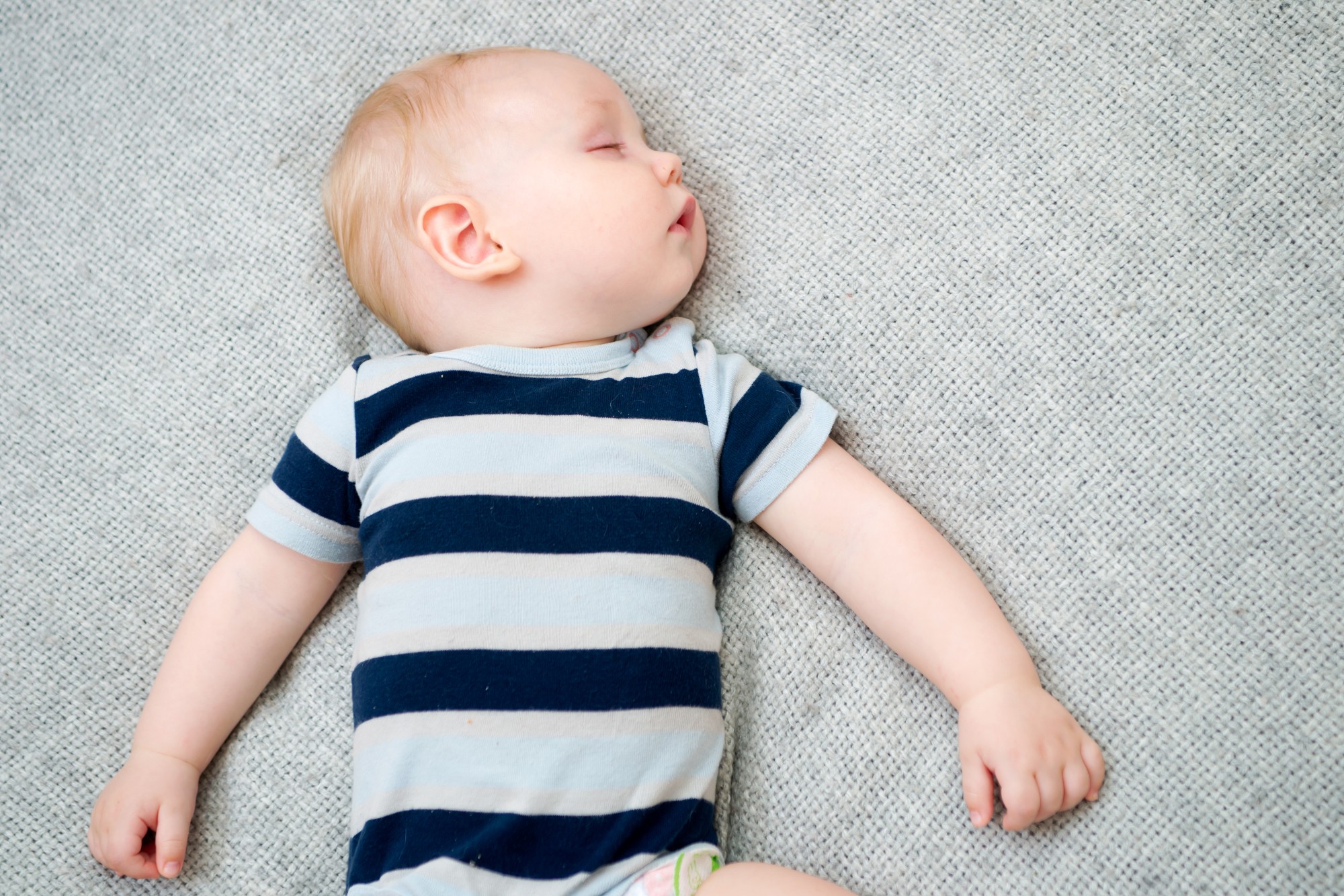
Sleep training encourages your baby to be on a schedule which will maximize cognitive development. It all starts with a daytime sleep training schedule which greatly impacts their nighttime sleep training outcomes. Neurons grow and brain development increases at an accelerated pace at night. Therefore the quality and duration of a baby’s nighttime sleep have a greater impact on overall growth and development than their daytime sleep. However, nighttime sleep is dependent upon the quality of daytime sleep. This is because babies develop specific, organized thoughts that permit them to learn and unlearn all the sensory input they experienced during the day.
Therefore a good night’s rest means more than just a peaceful night for the family. The actually quality of your baby’s sleep allows her to form memories and start emotionally bonding with those they interact with during the day. Hence, the earlier sleep training begins, the earlier they have this cognitive development tool to help them bond with you, and the sooner she can start forming memories about her family!
When sleep training, Newborn Care Specialists feed, diaper, and care for infants much differently during the night than we do during the day. At night, it’s tough love – all business. You do not want your baby to enjoy getting up at night!
Our sleep training methods at night involve no lights (as we feed in the dark or with a small light on), no talking to them, no singing, no eye contact, no TV, no music, no mobiles, no rocking, no singing, and no diaper changes unless they have dirty diapers.
We do not wake a sleeping baby. Only if the baby is premature and/or the pediatrician instructs do we awaken the baby every 3 hours to eat. When the baby is gaining a ½ pound a week, we allow them to sleep. If the baby stirs, we do not pick them up. We wait until they are at a full cry before attending to them because many times they will go back to sleep. We prefer gentle sleep shaping or gentle sleep conditioning to help soothe them as they physiologically cannot self-soothe on their own.
First, we change the baby’s diaper and re-swaddle. If you are breastfeeding, we bring your baby to you for nursing. If the baby is bottle-fed and a one-ounce drinker and goes back to sleep, we unswaddle and feed more, and if they continue to sleep through, we change them using cool baby wipes on their bottom to wake them up to continue to feed and ensure they eat or they will be waking up again soon wanting to eat. We take care of overnights for you so that you can rest. This includes helping you learn to store your breastmilk and then feeding your baby at night, along with properly sterilizing your bottles.
As your baby grows, then during the daytime our goal is to encourage your baby to consume more so they receive the nutrition they’d usually get at one of the nighttime feedings, so eventually, the baby is getting their adequate amount of nutrition for their weight. Nighttime feedings move to their daytime feedings and they eventually sleep through the night, allowing mom and dad a peaceful and full nights rest as well.
If you need help sleep training your newborn or infant or toddler, I can help you. I do not allow babies to sleep with the bottle as they age. Sleeping with the bottle can lead to serious tooth decay as well as cause ear infections. Fluid from the bottle and germs from saliva drain into your baby’s Eustachian tubes at the back of their throat, leading to their middle ear. I’ve taken over jobs where children have not been sleep-trained properly, waking up to twelve times a night because they were given a bottle to sleep and they couldn’t sleep unless it was in their mouth. They’d wake every time it fell out of their mouth. It is a vicious cycle to break but it can be done.
I’ve also trained children who scream to get out of their crib or bed at 4am or 5am, training them to stay in bed until 7am or when parents deem it to be an appropriate time to start the day. Children need boundaries and structure to feel safe and secure. They want these boundaries and it can be a nurturing experience for them to receive them. It is also exciting for them as they recognize self-accomplishment when they meet your goals; and feel better about themselves and the little human beings they’re becoming.
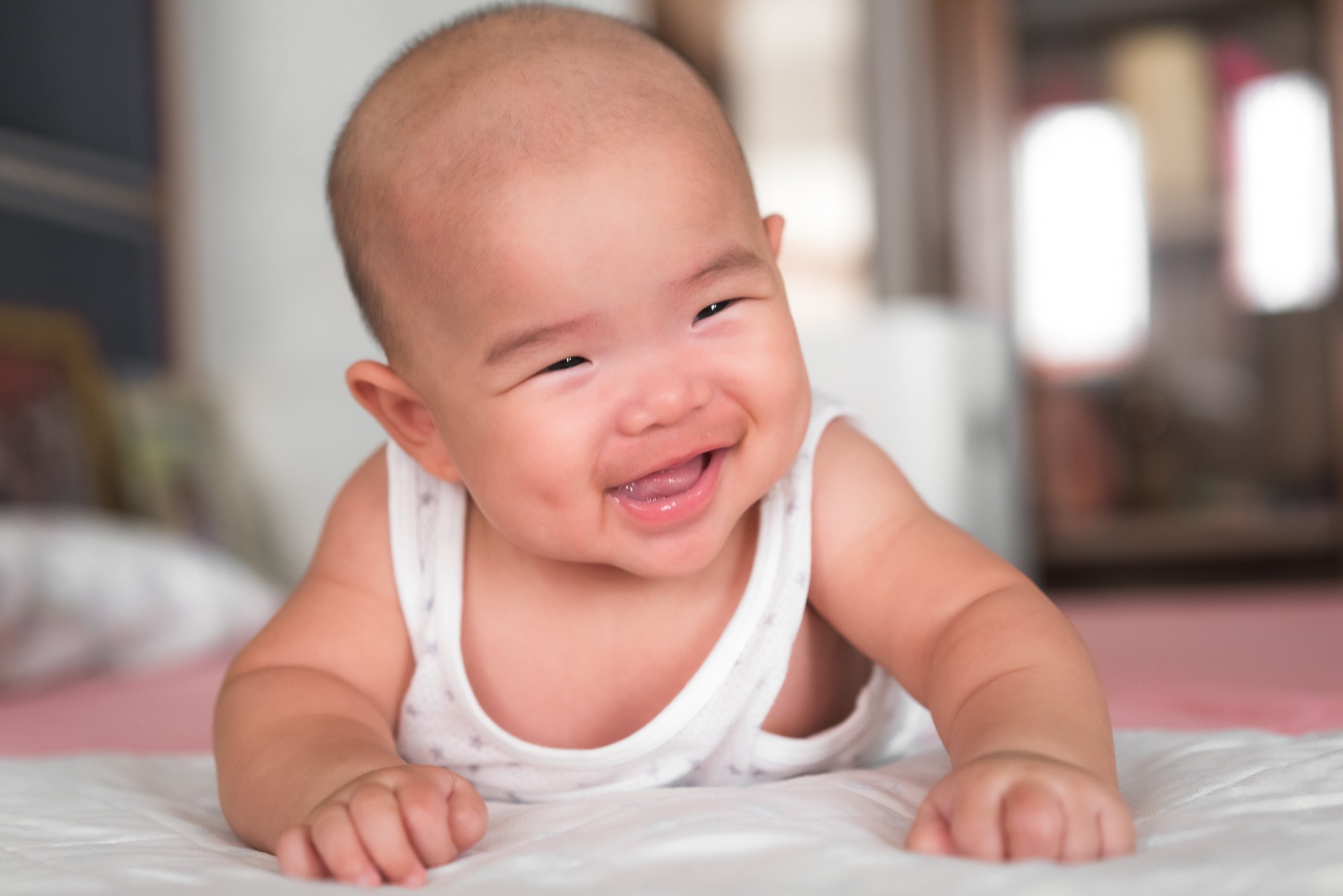
Tummy time enables your newborn baby to receive several essential developmental benefits as your newborn engages their entire body to lay the foundation of all of their sensorimotor skills for their entire life.
How exactly do you do tummy time? Follow the timeline below and read the tummy time tips. It’s never too late to start tummy time exercises, and to give your baby all the tools they need to reap the tummy time benefits.

In your tummy, your baby was curled up in a little ball shape. Tummy time exercises allow your baby to open up and gently elongate the front of their body for optimal newborn development. Tummy time itself does not hurt. However, it is a brand new, stimulating experience for babies to process as they engage their entire body to lay the foundation of all of their sensorimotor skills for their entire life.
A Newborn Care Specialist can help you and your baby through tummy time to reach your baby’s newborn developmental milestones. Learn tips on how to do tummy time here.

Overstimulating a newborn is very easy to do and it’s important to learn the cues to avoid crossing this delicate line. When your baby is overtired or overstimulated, a pacifier can’t always do the trick! A Doula or Newborn Care Specialist can teach you about the secrets of the fourth trimester and how to nurture your newborn back into feeling a familiar safe, secure environment which mimics your womb.
They are calming down, they’re sucking slower, they’re yawning, eyes do not look around, eyelids start to droop.
They’re cranky, irritable, they’re crying uncontrollably, they look away from you, they’re staring at a wall (gaze aversion), crying, arching of back and neck, tremors, coughing, flailing arms or legs, sneezing, rubbing eyes, twitching, grasping, sighing, breathing rate may be faster or slower or may have pauses that last 2 seconds or more, skin may be pale, dusky, red or/and blotchy, arms and/or legs may be extended or stretched out, fingers and/or toes splayed, hands in fists, high arm position where arms are over the head and forearms lay across the face in self-protecting or shielding manner, rigid flaccid body, squirming, jerking, mouth open limply, or tongue extending beyond lips.
Too many visitors, whether it be relative or friends, too early just after giving birth can also overstimulate your baby. It is important to have your baby on a sleep training schedule to avoid overstimulating. Ensure there is Daddy time and sibling time, but also be instinctive of your baby’s needs. A Doula or Newborn Care Specialist can help you by telling guests when it’s an appropriate time to visit or distract siblings when Mommy needs to breastfeed or bathe the baby, as well as educate parents on soothing techniques which the baby instinctually already knows and effectively responds to.
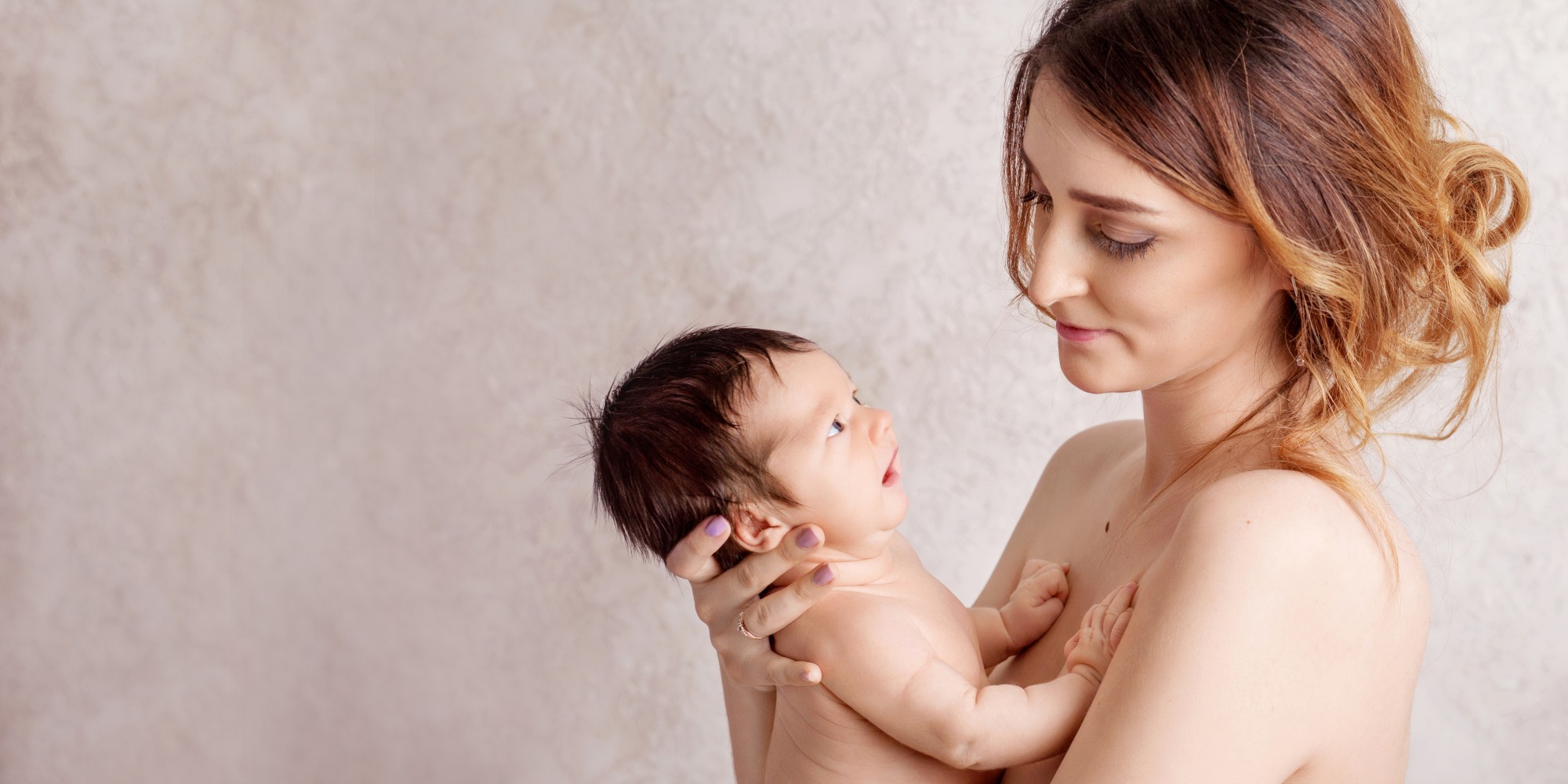
Bonding with your newborn baby can happen immediately after birthing through a method called Kangaroo Care. This promotes psychological and physical well-being for both your newborn and for you as the mother. Kangaroo Care includes skin-to-skin contact and exclusively breastfeeding.
Kangaroo Care is excellent for both parents, however. Studies show lowered testosterone levels when fathers experience skin-to-skin with their babies. All babies and all parents benefit from Kangaroo Care, regardless on the feeding method.
Kangaroo Care is wonderful for mothers who have problems breastfeeding, too, when needing to feed their newborn formula and/or through a tube. Having your baby suck and nuzzle on empty breasts can help stimulate your milk production. In fact, practicing skin-to-skin contact with the mother stimulates a specific part of the newborn’s brain, causing the baby to instinctively move to the breast, self-attach, and feed. This increases the baby’s physical development. Secondly, kangaroo care causes the baby to gaze at his or her mother, ensuring emotional and social development.
This should begin right after giving birth and is always a great benefit at any time during the first few weeks. For an infant in need such as a premature baby, it can be used continuously day and night however it is beneficial any amount of time it is experienced.